| Comet 73P Schwassmann-Wachmann 3 |
| HOME Best Lunar Planets Deepsky Misc Equipment Techniques Links |
|
This comet was discovered by Schwassmann and Wachmann in 1930 and has returned to our skies every 5.36 years. In 1995 it broke into several fragments, the brightest of which have been easily observable in amateur telescopes in 2006, when I was photographing it.
When the comet first appeared in that year the brightest part was fragment C, with fragment B close behind. However in May just before the comet's closest approach to Earth, fragment B broke further into smaller fragments but also flared up in brightness (perhaps because of its now greater surface area) and became brighter than fragment C, which by this time began to get too close to the sun (low in the sky) to see well anyway.
I have photographed fragments B and C using my Vesta SC3 modified webcam (the black and white images) and my Canon EOS300D (the colour image of fragment B).
|
| 17 May 2006, fragment B between 00:41 and 01:22 UTC The fragments of the comet are now getting lower and lower in the sky as they get closer to the sun. The practical consequence is that we have to stay up later and later, which means at this time of year that there is only a short time to view the comet before dawn. I captured 134 18-second frames beginning at 01:41 local summer time using my SC3 modified Vesta webcam placed at prime focus of the Megrez 80 II f/5 refractor. I used iPrep to create an artificial flat to deal with some dust spots on the AVI frames, and I used K3CCDTools to subtract dark frames, although iPrep could have done that too, and save as an AVI. The images were aligned on the background stars in Registax then saved again. The images needed a bit of processing as is usual with astronomical images, in order to get the best from them - so I used VirtualDub to apply a series of filters to all frames in the video. These filters flipped the image to the correct orientation, adjusted the levels (histogram), applied a little deconvolution followed by a slight blurring to remove some noise. I wanted to save using the popular DiVX compression format, so I added a filter to resize to exactly 640x480, because the alignment steps had cropped the frames. This image is a result of stacking 86 frames in Registax and post-processing using PixInsight LE. Click the image to download the video (333Kb) NB. DiVX codec is required, available from www.divx.com. |
||||
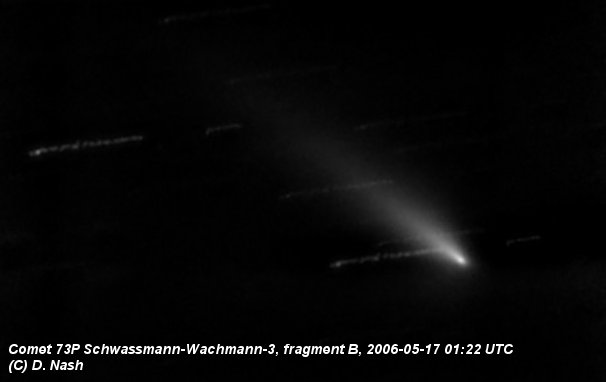
|
||||
| to top | home | |||
|
25 April 2006, Fragment C around 23:30 UTC Animation comprised of several frames shot through my Celestron C8 telescope at f/5. |
||||
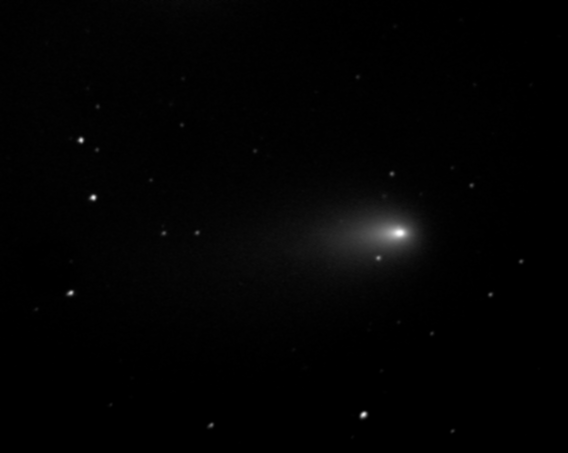
|
||||
| to top | home | |||
| 25 April 2006, Fragment C between 23:13 and 23:56 UTC | ||||
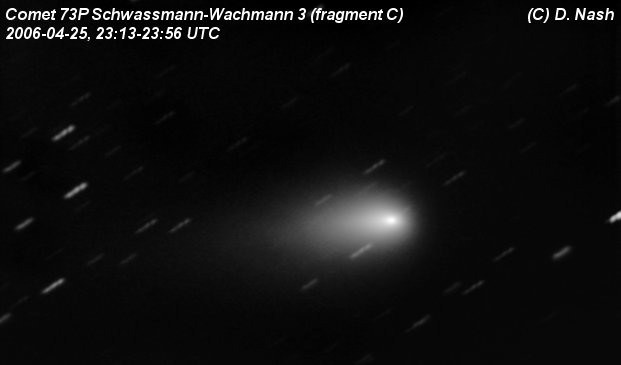
|
||||
| to top | home | |||
| 11 May 2006, fragment B around 00:08 UTC | ||||
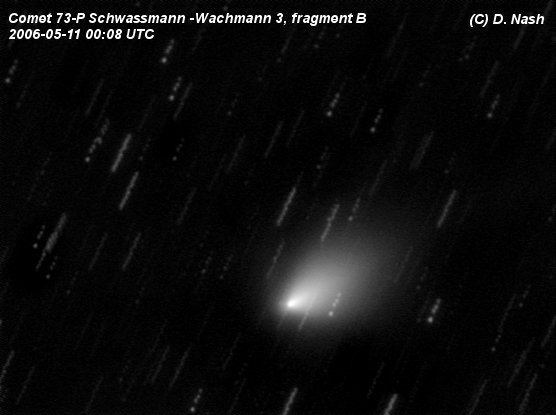
|
||||
| to top | home | |||
| 11 May 2006, fragment B around 00:35 UTC This is a stack of 4 images captured with the Canon DSLR. Click to see full-sized. |
||||
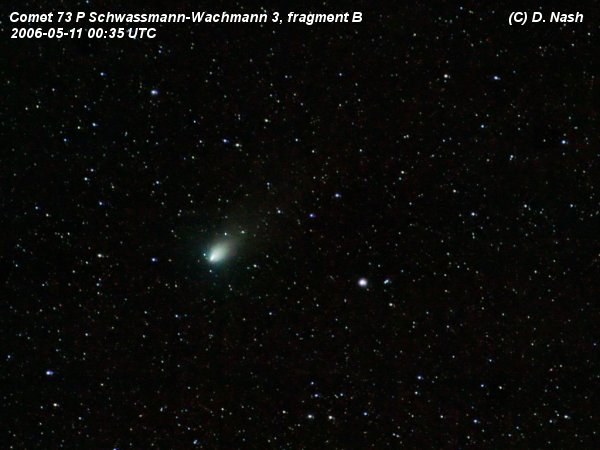
|
||||
| to top | home | |||
 |
||||
| All text and images copyright and may not be used without permission |
||||